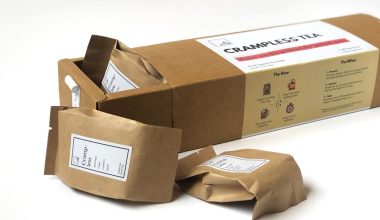Whether you’re opening a new storefront, branding your fleet of service vehicles, or preparing signage for a trade show, your logo plays a central role in public perception. A crisp, readable, and well-placed logo can project professionalism and credibility, while a blurry or ill-sized one can do the opposite. Knowing how to prep your logo specifically for use on signage, storefronts, and vehicles ensures brand consistency and visual impact across physical spaces.
TL;DR: Before applying your logo to signage, storefronts, or vehicles, ensure it’s in the right format—typically vector-based (like SVG, AI, or EPS)—with correct color profiles and clear spacing. Test how it looks at various sizes, and make adjustments to fit the medium whether it’s a metal sign, glass window, or vinyl car wrap. Work with professional installers or printers who can maintain brand integrity. Always use style guides and scalable art to prevent distortion and color mismatches.
1. Understand the Requirements of the Medium
Different applications—such as large-format signage, glass storefronts, or the sides of work trucks—place distinct demands on your logo. Start by understanding the surface and conditions under which your logo will be displayed:
- Signage: These may be lit or unlit, indoor or outdoor. From a small door plaque to a high-rise building banner, lighting, texture, distance, and scale all affect clarity.
- Storefronts: Windows and building facades may involve transparency, reflection, or complex surfaces like brick or tin.
- Vehicles: Curved panels and moving conditions mean the logo must hold up while in motion and be readable from a distance.
Pro Tip: Observe competitor signage and vehicle branding in your industry for a point of reference on how logos are adapted based on size and material.
2. Use the Right File Types and Formats
For any large-scale or physical printing, you must use vector graphics formats rather than raster images. Vector graphics scale infinitely without losing clarity, whereas raster images (like JPEGs) pixelate as they enlarge.
- Preferred formats: SVG, AI, EPS, PDF (with vector data)
- Avoid using: PNG, JPEG, BMP unless absolutely necessary or at extremely high resolutions
Why vectors matter: They retain sharp lines, proper proportions, and editable features—critical when adapting your logo to different signage shapes and scales.
3. Consider Color Profiles and Accuracy
Colors may appear dramatically different when printed—as opposed to how they appear on digital screens. Here’s what you need to know:
- CMYK: Use this for most printed materials including signs and wraps.
- Pantone (PMS): For exact color matching, especially for iconic brand colors needing consistency across vendors.
- RGB: Reserved for screens and digital applications, not print.
Always ask your printing vendor for a proof or sample before full production. Color shifts are a common—and preventable—error in sign prep.
4. Maintain Safe Areas and Padding
Every logo must have adequate visual “breathing room.” When placing your logo on a vehicle or sign, leave space around the edges to prevent visual clutter or accidental cropping.
This space, known as clear space or safe padding, should be determined using your branding guidelines, often based on the height or width of a letter within the logo itself.
If no guide exists, consider at least 10% of the width of the logo as a buffer zone on all sides.

5. Consider Multiple Logo Variants
A single format or orientation of a logo rarely works for all surfaces. It’s helpful to have and prepare several logo adaptations ahead of time:
- Horizontal and vertical formats — to fit long signs or narrow windows
- Monochrome or duotone variants — for backlit signs or etching on glass or metal
- Icon-only version — just the symbol or initials, suitable for limited spaces like a vehicle door or window corner
Make sure all these variants are included in your brand style guide and approved internally to preserve visual identity across all applications.
6. Test for Scalability and Readability
Your logo may look perfect on a website header but fall apart when stretched to ten feet. Before finalizing large-scale applications, perform tests at various sizes using vector previews or printouts.
Ask yourself:
- Is the logo legible from 10, 50, or 100 feet away?
- Do small text or graphical elements hold up at signage scale?
- Is there enough contrast between the logo and background?

A blurred or reduced-contrast logo loses brand effectiveness. Adjust font weights or outline thickness if needed for legibility.
7. Material and Surface Considerations
Physical surfaces can distort or obscure logos if not planned for correctly. Here’s how to adapt:
- Textured walls or bricks: Avoid thin lines or overly detailed logos that won’t translate well.
- Glass surfaces: Transparency may reduce readability unless a backing or opaque vinyl is used.
- Vehicle curves: Be wary of wheel wells, door handles, and seams which may interrupt the logo.
Consult your print or wrap supplier on how your logo behaves with different substrates like aluminum, acrylic, vinyl, or glass. They can help recommend specific techniques like die cuts or layering for clarity and durability.
8. Work With Professional Installers and Printers
DIY printing and installation might save cost upfront but lead to long-term issues like fading, peeling, or alignment problems. To execute your logo properly on physical mediums, you need professionals who:
- Understand the technical requirements of print and surface prep
- Can provide you with proofs, mockups, and samples
- Have the right equipment for high-resolution, weather-resistant output
Request portfolio examples or customer testimonials before making your selection. Ensure they can interpret your brand guidelines accurately.
9. Final Checklist Before Production
Before you hit “go” on signage or vehicle graphics, run through this pre-production checklist:
- Logo is in a vector format (AI, EPS, or PDF)
- Correct color profiles (CMYK or Pantone)
- Correct versions and orientations of the logo prepared
- Clear space around all sides maintained
- Tested at various scales for readability and contrast
- Installed or printed through a reputable vendor
Bonus Tip: Include mockups or visual guides for real-world positioning such as storefront elevations, wrap templates, or scaled signage installation guides. This helps vendors and internal teams visualize final placement and make informed decisions.
Conclusion
Prepping your logo for physical spaces goes far beyond uploading a file and hitting print. By taking deliberate steps—choosing the right format, color settings, visual spacing, and variant adaptations—you give your branding a strong, professional presence in any environment. Whether it’s a lit storefront sign, a delivery van, or an event banner, proper logo preparation ensures you consistently communicate the identity and credibility your brand deserves.





